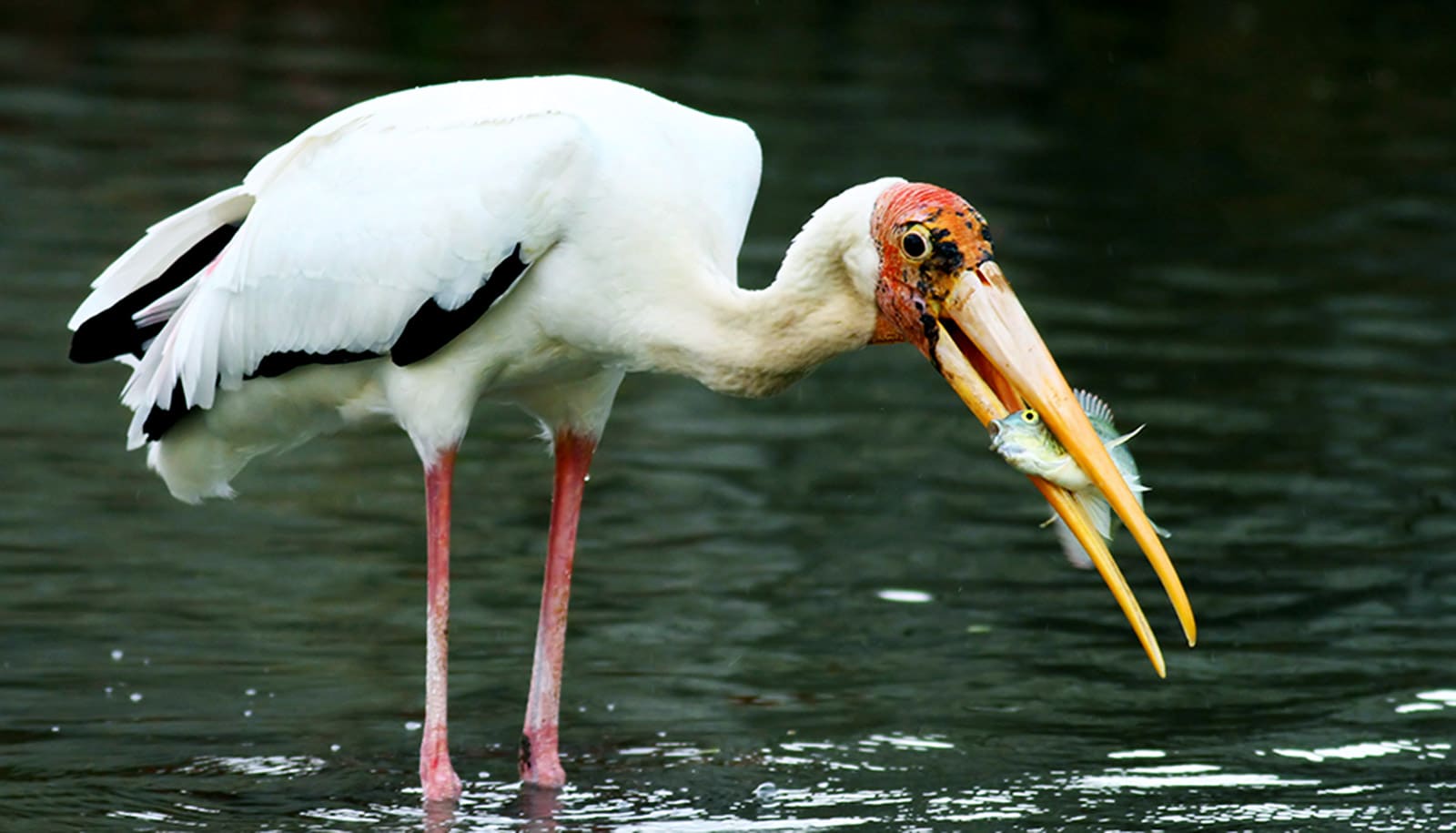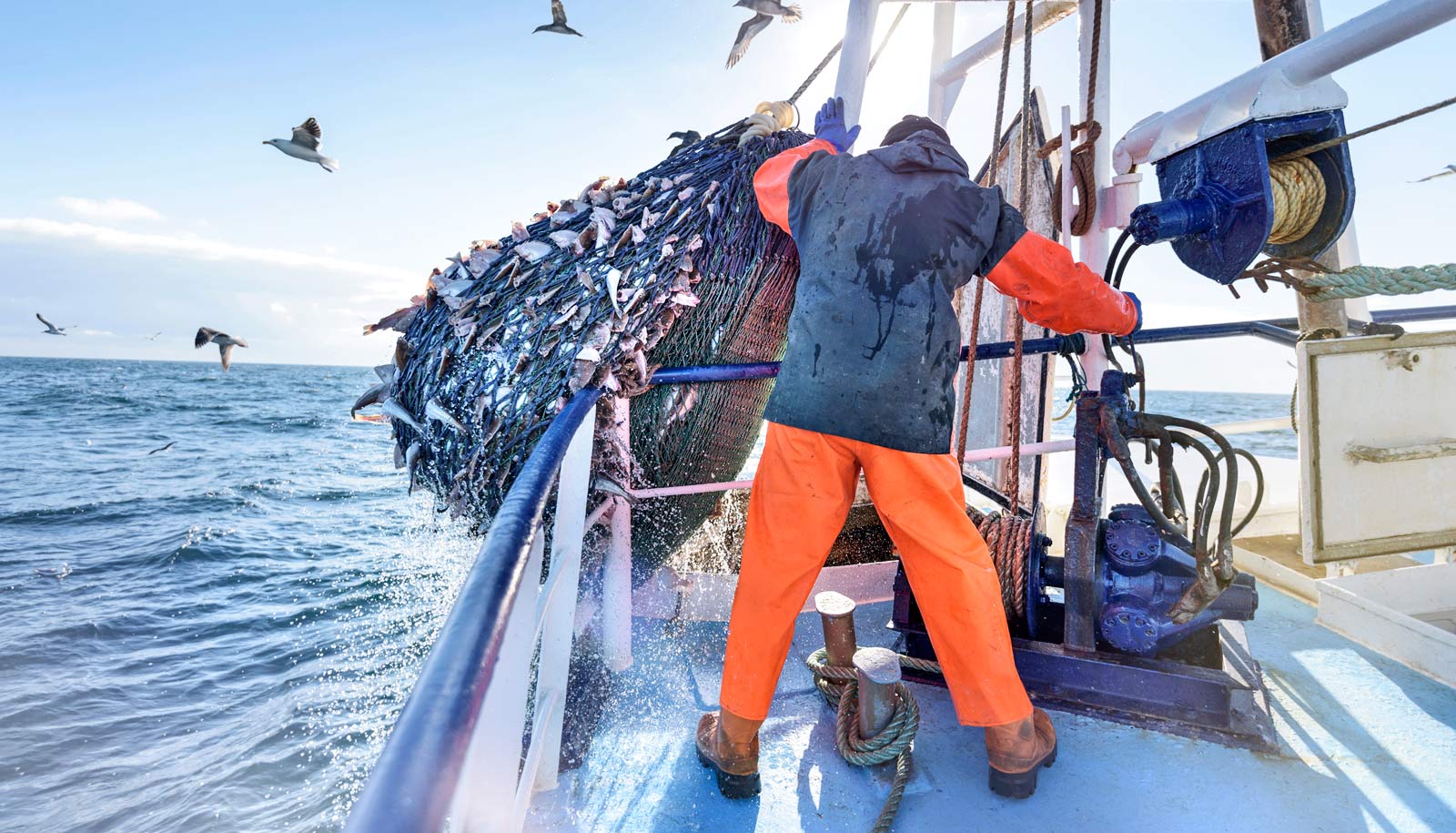Crossbreeding with their more widespread cousin threatens Milky Storks, an endangered wading bird native to Southeast Asia, researchers warn.
“Apart from habitat loss and fragmentation, extinction through hybridization is one of the major threats to endangered species,” says research lead Frank Rheindt, an assistant professor in the biological sciences department at the National University of Singapore’s Faculty of Science.
“Our study is the first to provide an estimation of the population genomic status of the endangered Milky Stork in Singapore, and the findings can contribute to the design of effective solutions for conservation management of the globally endangered species.”
The Milky Stork, an almost completely white plumaged stork species, lives in coastal mangroves, mudflats, and estuaries across Southeast Asia. The International Union for the Conservation of Nature Red List currently considers it endangered, with about 1,500 individuals left in the wild.
About seven to 10 percent of them live in the region around Singapore and Johor, Malaysia. Scientists believe the majority are related to those that escaped from captivity.
Kissing cousins
Since the late 1980s, Milky Storks (Mycteria cinerea) and their sister species, the Painted Storks (Mycteria leucocephala), have lived together in captivity in Singapore and Malaysia, which led to inadvertent crossbreeding or hybridization between the two species.
A black pectoral band and a pink flush in the inner wing coverts and tertials differentiates the Painted Stork from the Milky Stork. The hybridized storks display intermediacy in these traits.
“A few of these hybrids have escaped from captivity. Although some of these hybrid escapees have been recaptured, others continue to roam freely. This poses a major threat to the genomic composition of the Milky Stork population in the wild. However, the extent of this threat has not been clear,” says Pratibha Baveja, a PhD student in Rheindt’s research group and first author of the paper, which appears in Biological Conservation.
To find out how crossbreeding affects the gene pool of Milky Storks, researchers used population-genomic approaches to analyze the tissue samples of 46 storks from both captive and wild environments in Singapore.
The findings show significant genomic contamination of Painted Stork alleles in the Milky Storks’ genetic profile following crossbreeding for several generations. Although originating from a limited number of introduced Painted Storks, the hybrids are now an integral part of both the wild and captive Singaporean and southern peninsular Malaysian stork population.
Species in limbo
The research team determined that genetic infiltration from the Painted Stork affects the genomic composition of more than half of the sampled storks. The findings suggest that due to their very small populations, the genome of the more widespread species may eventually absorb the globally endangered species.
“Although native to the greater surroundings of Singapore, the current population of Milky Storks in Singapore is not only partially hybridized, but also thought to be derived from escaped birds. This has led to a situation in which the species is currently not even officially listed among Singapore’s native and introduced bird species, Rheindt says.
“This lack of formal recognition has left the species in limbo, but belies the importance of Singapore for the global survival of the species. The future is likely to see expansions of Milky Storks from the increasing Singaporean population into the diminishing Sumatran breeding grounds that form the species’ core.
“It will now be up to us here in Singapore to decide whether the core of the range will be re-stocked with pure Milky Storks or with hybrids. The challenge now lies in convincing the conservation community on the necessity of such conservation actions.”
To prevent crossbreeding, the researchers recommend identification and isolation of hybrid storks in bird parks, and zoos, from pure Milky Storks. Researchers can do genetic analysis to ensure individuals’ purity in any planned breeding programs or releases.
Further, researchers recommend strict removal of hybrids from the wild, along with a release of genetically pure Milky Storks, which are imperative for the continued survival of the species.
Researchers at Wildlife Reserves Singapore contributed to the study.
Source: National University of Singapore



